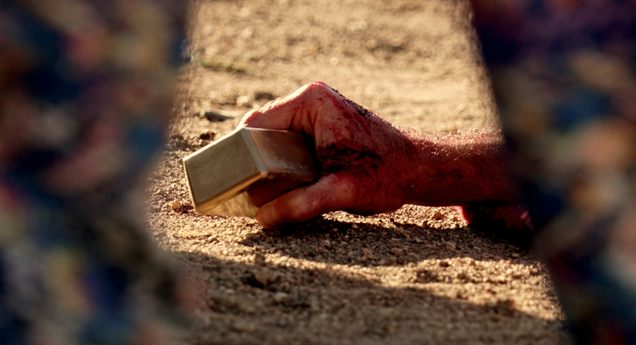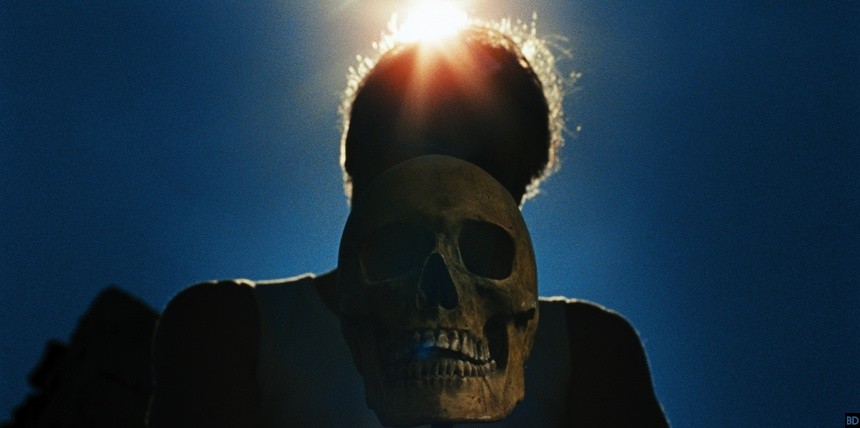#TIFF17 Review ‘Let the Corpses Tan’

What happens when you throw exploitation, spaghetti westerns and an art house sensibility all together in a meat grinder? You get Let the Corpses Tan (Laissez Bronzer les Cadavers), the product of French husband and wife filmmaking duo Bruno Forzani and Hélène Cattet, and one of this years selections for TIFF’s Midnight Madness program.
Let the Corpses Tan stems from a love of old school genre cinema, particularly spaghetti westerns, and revels in the techniques that made them so distinctive. The movie is built from the ground up with close ups for bricks and whip pans for mortar. It feels like some sort of mixtape of cool shots that’s attempting, and succeeding for the most part, to turn classic visuals up to 11. Shot on super 16mm film stock, attaining a gritty and grimmy look, Let the Corpses Tan is unmistacably a bold exercise in style, and lots of it.

The basic premise here, which also serves as the only shred of a plot you’ll find (not that the film really needs anything more, and nor is it particularly concerned with providing anything more for that matter), is that four men are involved in a robbery on an armed truck convoy carrying a load of gold somewhere in the desert and hold up in a boarding house/hotel (also in the desert) run by an older couple. During their getaway the thieves pick up two young women and a small boy, who by chance stop them for a lift, to appear inconspicuous. Before the thieves can make their getaway under the cover of night two police officers show up looking for the boy who has been reported missing. In the process of looking around one of the officers gets shot and, you guessed it, a standoff is triggered, which lasts the rest of the film between the remaining cop, homeowners, hitchhikers and thieves who continuously betray each other and jump sides.
One of the most interesting things grappled with is the presentation of time. The movie constantly shifts around in time forwards and backwards sometimes in hours but mostly in minutes. Every temporal jump triggers a shift in perspective and we change focus from one character to another. Cattet and Forzani use this quite well to explore one event through multiple characters’ viewpoints several times throughout, emphasizing the interconnectivity of everyone involved in the fight for survival. On top of all this are continual flashbacks to sadistic rituals that the homeowners took part in. These scenes are never really explained but add to the overall wild vibe.

Again what’s important is not the plot but the visuals, and audio as the score sounds like it could have been taken from a vault of unused 60’s spaghetti western soundtracks. Many a sequence play out like a mash up of Edgar Wright and Sergio Leone with close up after close up after close, etc. The style gives a real intensity to everything, multiplying the gravity of minute details, while maintaining a breezy pace but also producing a spacial incomprehension. If you like establishing shots look elsewhere.
The film ultimately suffers from problems associated with being concerned with all style and no substance. The visuals are certainly bold and engaging but with an hour and a half runtime they’re not enough to get by on their own. Like many western movies dialogue is sparse, and what is said is rather economical. And as the film is shot to be flashy we never really get a sense of whom any of the characters really are. Later, when they’re all thrown into peril and grappling for their lives, we’re not too concerned one way or another how they make out and remain rather emotionally indifferent. Let the Corpses Tan is without a doubt a gutsy exercise in style and one that is certain to appeal to fans of the old school spaghetti western genre, but while you’ll probably be engrossed in the first 45 minutes the next 45 may prove a little difficult.
Let the Corpses Tan will screen at TIFF on Sept. 14 at Scotiabank 14 at 7:00 PM and Sept. 17 at Scotiabank 11 at 12:30 PM.

